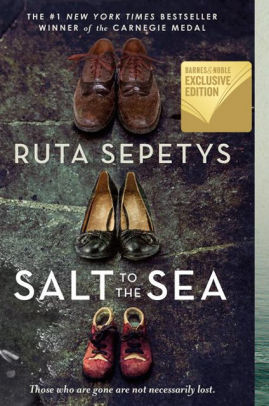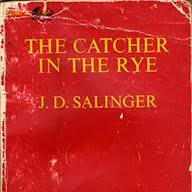
Whenever I come across a book sale—whether real or virtual, I sometimes will explore and even buy a book because I like its cover.
Like anything else that is marketable in our visually-hypnotic, consumer-oriented world, the way a book appears on its front cover is very important in attracting the right customer.
Genre books are easy to spot. Sci-fi book covers will usually show aliens or humans usually in space uniforms wandering on an inhabitable planet.
Harry Potter fans will have the very famous boy and his glasses staring out in his usual puzzled expression surrounded by his cohorts and the odd owl or two.
Detective fiction will most likely have the most lurid goriest covers, often with a victim spouting blood from a bludgeoned body. Ghost stories will of course will reveal ghosts looming over a cemetery, or sometimes mysterious hand-prints all over a deserted room.
And yes, romance novels will have the classic gorgeous couple embracing—she with the windswept hair and low-cut bodice, he with the masculine arm muscles and square-jawed determined expression.

Literary novels are harder to design covers for because the stories are not so obvious in their content.
It helps to place a well-crafted and very short summary and a blurb somewhere on the dust-jacket alerting the reader what the book is about unless it’s already a famous classic.
But regardless, the cover design is still very important.
If your book is published by a large publisher, most likely the writer had nothing to do with the book cover design.
Publishers are very regimented in their production departments and will usually work with designers on staff who create the cover with specific traits that will distinguish their imprint and brand.
Small press publishers may allow the writer to influence the cover if that is negotiated in the contract. One of my writer friends, Alexander J. Motyl who is also a painter, created the cover for his book that was published by a small press and was perfect for his novel VOVOCHKA about Vladimir Putin’s best friend.

If a book designer is given the task of creating the cover, then hopefully they have actually read your book and can pull out some key scenes or characters to better devise a compatible cover.
But if you are a self-publishing author, then you have all the freedom to design the best cover for your work.
Alas, writers are not necessarily visual artists. And so, if this is your dilemma, then perhaps start with researching other book covers (indie and ones from publishers) to help determine your aesthetic tastes.
You’ll discover that there are various trends in publishing books.
For instance, you might notice that static shoes tend to appear in a lot of covers as in these bestsellers:


Maybe it started with THE WIZARD OF OZ and the continuous charm of the ruby slippers, but frankly, I find shoes on book covers way overdone and boring even though I really liked and enjoyed reading both these books pictured above.
Another trend is to simply use a lot of printed words without pictures, but arranged in more random ways as in all of Jonathan Safran Foer’s books:

Provocative graphics and photography are also good choices in book design, but again it should somehow relate to the story content.
Although I loved CATCHER IN THE RYE, I never quite understood the odd graphic on its original cover but I admit, it’s more eye-catching than the version I bought long ago with its minimalist approach:


As an indie author, I too had to select a cover for my short story as book, THE MIDWIFE’S TALE: A CHRISTMAS STORY. I don’t have very much artistic skill, but thanks to a wonderful and free online design tool, called Canva (https://www.canva.com/), I was able to do it all in under an hour.
With Canva you can choose their free or paid-for images and upload them into the dimensions of a book cover. You can then play with print fonts and colors.
Give it a try.

For my book, I was able to find a great painting from the 17th century that fit perfectly. Plus, it was public domain, and so I didn’t have to obtain copyright permission (be careful with this sort of thing when selecting your images).
For the text headings, I experimented with Canva’s many fonts and background colors (all free) and voila! A lovely cover!
It was a lot of fun to create, and I was not only pleased but amazed at how easy it was and how fabulous the cover looked (my opinion anyway).
Canva is also terrific for other things like social media posts, brochures, invitations etc. Highly recommended!
And while you are discovering the art and craft of book covers, here are a few more helpful articles to consider:
From Canva: https://www.canva.com/learn/book-cover-design-50-amazing-covers-you-will-want-to-pick-up/
From Dave Chesson, an expert on Kindle: https://kindlepreneur.com/book-cover-ideas/
From Joel Friedlander, who not only gives great advice, but also judges book covers: https://www.thebookdesigner.com/
Writing Wisdom:
“What is written beneath this heavy handsome book cover will count, so sayeth this cover.”—Anne Rice, American Novelist.
Cheers, Irene
In time for the holidays, and for a limited time–my latest short story, THE MIDWIFE’S TALE: A CHRISTMAS STORY.

Before the Three Kings and the Shepherds, there was another witness to the Nativity—The Midwife. And she has her own version of that miraculous night and historical time. A perfect short story gift for the holidays and beyond.
Available in paperback, E-book, and PDF formats.
http://www.irenezabytko.com/new-books/4594478039
Read more about THE MIDWIFE’S TALE
in the following interview posted on the “Whispering Stories” Blog: https://whisperingstories.com/the-writing-life-of-irene-zabytko/